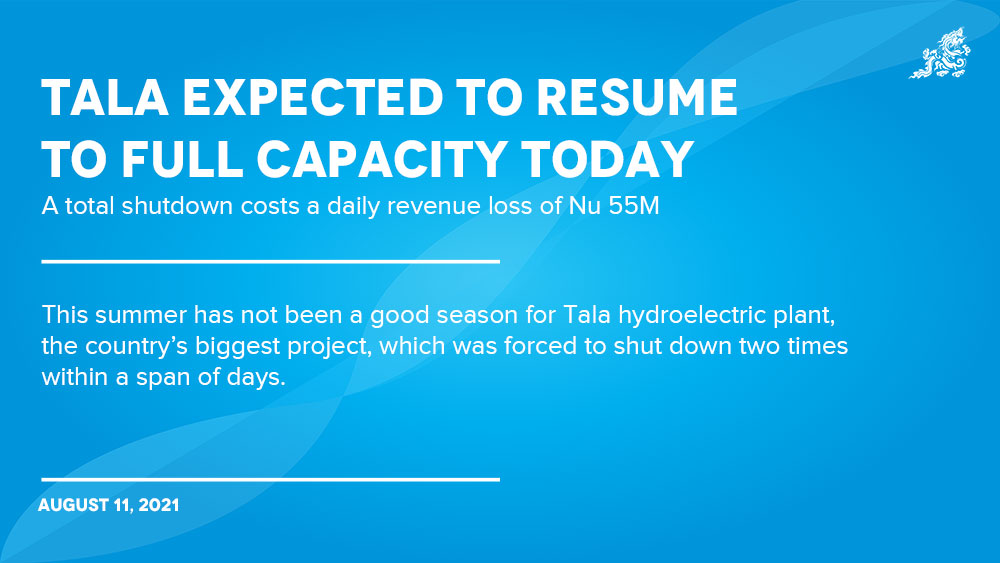A total shutdown costs a daily revenue loss of Nu 55M
MB Subba
This summer has not been a good season for Tala hydroelectric plant, the country’s biggest project, which was forced to shut down two times within a span of days.
The 1,020MW plant on August 9 was totally shut down as there was “some excessive seepage” from one of the intake gates at the dam. However, Druk Green Power Corporation Limited (DGPCL) officials said that they were working to restore generation to its full capacity by yesterday evening or today.
DGPC Managing Director Dasho Chhewang Rinzin said that the problem was not major as it was related to the earlier incident where debris after continuous rainfall had clogged the gates of the intake tunnels which led to the leakage.
He said that DGPC was attending to the problem and that it would isolate the affected gate and put the plant back into operation. Such problems normally happen but it took a little longer this time, he added.
“In incidents like this, we shut down the powerhouse. We hope to be back tonight or by tomorrow,” Dasho Chhewang Rinzin said yesterday.
The plant had suffered total and partial shutdowns since July 19, costing hundreds of millions in revenue. The plant was generating electricity in its capacity full capacity since August 1, according to DGPC.
At this time of the year, the plant in its full capacity generates a total of 1,122MW, including an additional 10 percent overloading generation, according to DGPC. This means a total closure of the plant costs about Nu 55 million (M) in a day.
The plant generates about Nu 1.7 billion in revenue in a month during the monsoon.
Officials said that there were no severe technical glitches in the plant. The problem was with the water-conducting system from the dam to the surge shaft, not with the generating units, according to them.
The officials said that the accumulated debris that had clogged the intake gates and the desilting gates chamber had been cleared.
Electricity from the plant is exported to India at the tariff rate of Nu 2.12 per unit. The plant produces about 26 million units of electricity in normal circumstances at this time of the year.
The incident happened at a time when the hydropower sector was considered the bedrock of the economy and when the rest of the sectors suffered a massive setback due to the pandemic.
The sector saw significant growth with energy generation increasing by 31.45 percent in 2020. The issue has hit the domestic revenue.
Edited by Tshering Palden


